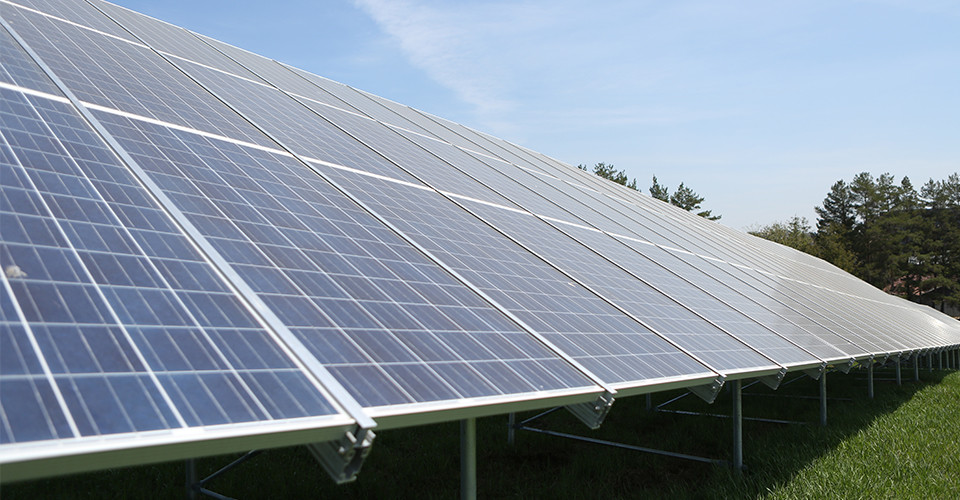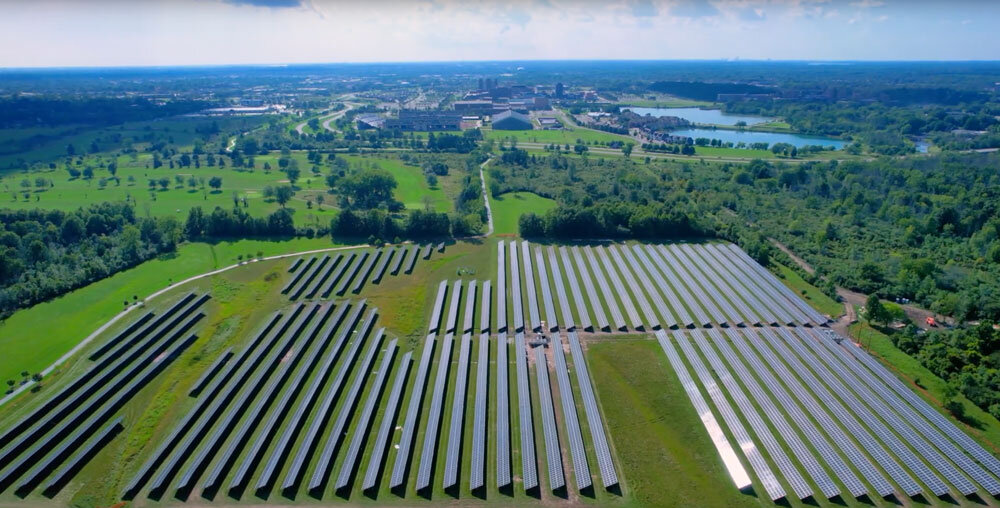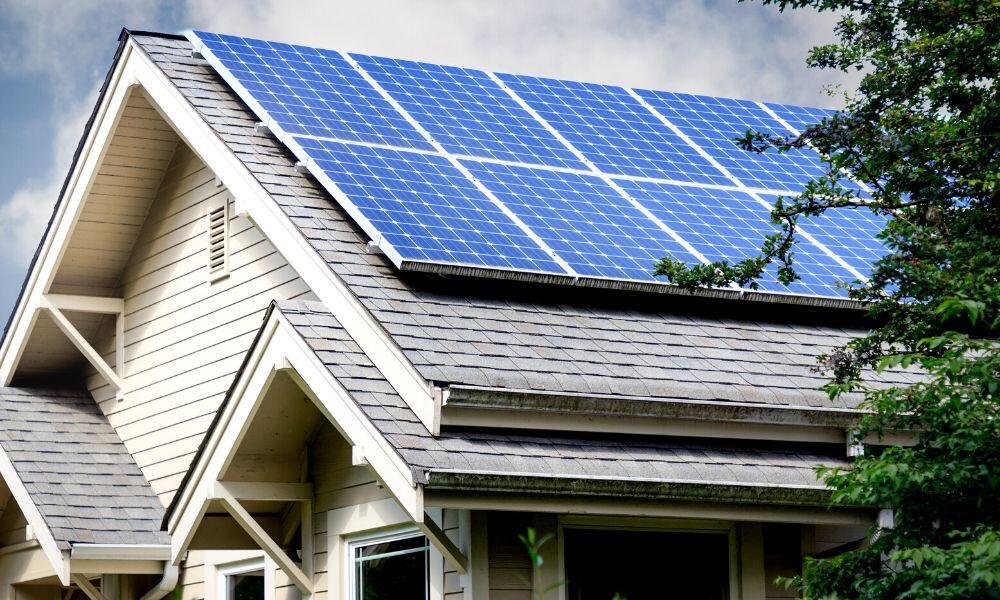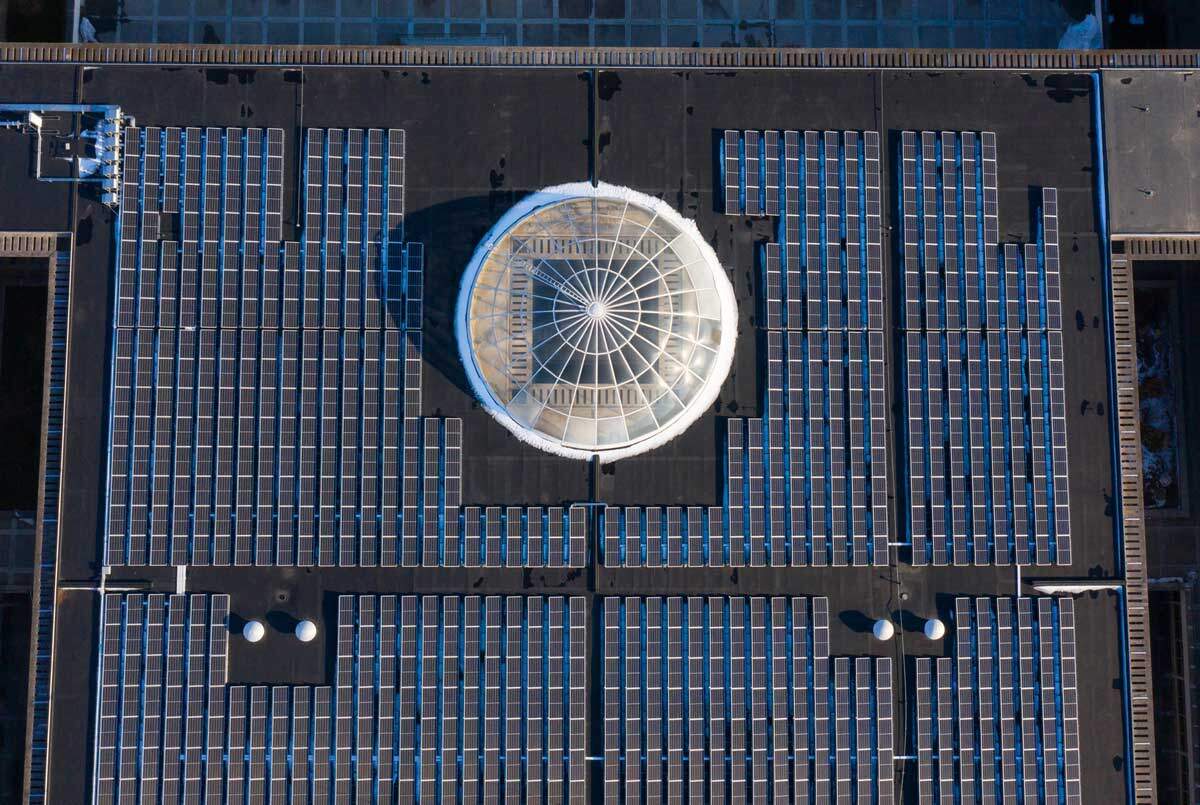SUNY Cobleskill Ribbon-Cutting Inaugurates Extensive Solar Array System

Cobleskill, New York – SUNY Cobleskill will celebrate the addition of a Solar Liberty solar array system on campus with a ribbon cutting ceremony on Tuesday, May 12, 2015, 3:30 p.m., at the College’s CEST Building. Dr. Debra H. Thatcher, Acting President of SUNY Cobleskill, will speak at this occasion, followed by Scott Bryant, Solar Liberty Sales Consultant. Mr. Bryant will speak in-depth about the abilities of the solar array system and the “SolrenView” kiosk. Linda V. Holmes, Mayor of the Village of Cobleskill, will be in attendance.
Generating power which will cover 3% of the campus’s total electric needs, the 75 kilowatt solar array will use 250 solar panels, 245 watts each. Arranged in 2 planes, composed of 3 rows and 42 columns, the solar array is estimated to save the College $8,404.80 in annual energy savings. An annual footprint savings of 68 tons of CO2 and 10,000 gallons of gas is projected. With the power to light 3,335 Rockefeller Center Christmas Trees, this exciting addition to the SUNY Cobleskill campus resulted from a partnership between the College, the New York Power Authority (NYPA) and the New York State Energy Research and Development Authority (NYSERDA).
To be located in SUNY Cobleskill’s CEST Building, a “SolrenView” kiosk will provide up-to-date measurements of the energy production and savings the campus will receive through the Solar Liberty solar array system.
About SUNY Cobleskill
With an emphasis on experiential education, SUNY Cobleskill prepares students for successful careers, advanced studies, and engaged citizenship. SUNY Cobleskill is an accredited, baccalaureate, residential college, with a rich academic tradition that spans nearly 100 years. Today, more than 2,500 students are enrolled in the 52 baccalaureate and associate degree programs offered through two schools – The School of Agriculture and Natural Resources and The School of Business and Liberal Arts & Sciences. Students live and learn on a modern, 902-acre campus that features outstanding educational facilities, including a contiguous farm with an equestrian center and 200-cow dairy facility, cold and warm water fish hatcheries, specialized classrooms and laboratories, two state-of-the-art culinary arts teaching kitchens, a student-run restaurant, child development and child care centers, and an art gallery.




